ScreenFonts: The Other Guys, Step Up 3D, Scott Pilgrim vs. the World, The Expendables, The Switch, The Last Exorcism
And now it's the turn of ScreenFonts to be a little delayed. Well, to be published on schedule I would've needed to have written this episode at ATypI 2010 Dublin. Regular conference-goers know very well that's not realistic, because the fun'n'games don't stop when the last presentation of the day is over. There are a lot of people you only meet once a year, or even less, so you have to take full advantage of every single moment.
Let's find out how the movie studios tried to lure us into the theatres last month.
For a comedy The Other Guys have a more than decent movie poster. Instead of relying on silly faces, stupid poses, and big red text, the movie studio went for a somewhat subtler approach. The visual language mimics that of "regular", more serious police movies – a palette of brown, beige, and grey, and reversed-out Standard Extended for the type (see this FontList for more wide Gothics/Grotesques). The design strikes the middle ground between the conventions of hardcore action movies – both protagonists leaping, frozen in mid-air with both guns blazing – and comedies – the incongruity of their appearance; nice socks and ties! It makes for a more downplayed, and in my opinion better comedy poster.
One final remark about the type – note how the leg of the R in "Other" nicely extends into the left arm of the Y in "Guys". This diagonal in turn defines the position of the "The". Very nice typography, well spaced and kerned. I am extremely thankful no one tried to be fancy by physically connecting the R with the Y. Now that would have been of poor taste.
I am a bit baffled by the lack of actual dancing in the posters for the Step Up franchise. I have seen the first one with my kids, and I can assure you these rather static poster images do not convey the dynamism of the many dance scenes in the movies at all. One can discern a little movement in the middle poster for Step Up 2 The Streets, but on the whole a lot of attention goes to people passionately holding each other, like in the movie poster for Step Up 3D.
See how typography-wise the movie titles evolve with the underlying themes. The original rough script was replaced by a grunge sans to accentuate the "street" quality of the second movie. For the third instalment in three-D it was substituted by – yes indeed – an extruded stencil face. How vewy clevah!
Whoa, wait a minute! What's this? Is there yet another trend in movie posters emerging? This one combines the checkerboard motif with the silhouette design, as introduced by the excellent movie poster for Vantage Point more than two years ago. The advantage of the photo puzzle is that many stars can be featured in the poster without having to resort to the dreaded floating heads. Furthermore when used judiciously one can add some story information as well, injecting a narrative into the design. Having this puzzle framed by a silhouette enhances the mood of the overall poster.
This month's movie poster for Middle Men resorts to this technique as well, albeit with far less convincing results. Whereas Vantage Point has the actors photographed against calm backgrounds, and cleverly uses scale and multiple frames for certain photos, Middle Men is a jumbled up mess. The photo puzzle is too linear, and there's far too much happening in that woman's silhouette, way too many tiny details in way too many different colours. Even the movie title set in a red compact sans has a skyline in it. Compare it to the nice integration of the Vantage Point title (ignore the fact that it is set in squooshed™ Helvetica), with its rectangular frame slightly protruding from the silhouette. And finally, is this all they could come up with for a movie about the emergence of internet porn? No, this tepid design simply won't do.
See, it could indeed be a new trend. The second design to adopt the checkerboard-in-a-silhouette style this month is the teaser poster for Twelve. My main problem with this interpretation is that it seems as if the designers couldn't make up their mind – a silhouette against a moody nocturnal backdrop, or a photographic puzzle in a silhouette? – and finally decided to combine both. It suffers from the "idea within an idea within an idea" syndrome, symptomatic for indecisive designers.
The theatrical poster sticks to the photographic puzzle only, yet the structure of the design is not very interesting nor engaging. Neither is the choice of Myriad for the movie title – a fractured all uppercase version for the teaser poster, and a "dirty" all lowercase version for the theatrical poster. Adding dirt and texture to the latter works counterproductive, because I almost missed that the bottom triangle in the "w" was changed into a silhouette.
The movie poster for The Disappearance of Alice Creed employs chiaroscuro – the technique perfected during the Baroque and characterised by strong contrasts between light and dark – to great effect. By leaving a third of the poster entirely black Alice Creed's brightly lit face and her kidnappers really pop out of the image. Slanting the dividing lines and the typography downwards to the right emphasises the asymmetrical layout and makes the poster more dramatic. The red type matching the colour of Alice Creed's sweater works as a unifying element, tightly holding the design together.
The square sans serif reminds me of Refrigerator Deluxe, but I wasn't able to positively identify it yet.
As far as ensemble posters go, the group photograph on the movie poster for The Oxford Murders at least doesn't look like it was cobbled together in Adobe Photoshop. Lighting, position, skin tones; all seems consistent and logical. The numerous equations scribbled on the blackboard are a nice reference to the storyline – a potential series of murders linked by mathematical symbols the Oxford University professor and his grad student try to stop. It all looks very well until suddenly you notice the designers apparently were quite lazy. The whole surface of the blackboard was simply duplicated horizontally.
No Trajan or any of its alternatives to be found in this design, but a rather unexpected typeface. Since I am so used to seeing its open form, I was a bit thrown off by the filled version of Augustea. I don't think it exists as an out-of-the-box digital font. Simply converting the type to outlines, then selecting and deleting the inner shapes does the job.
Comic book adaptations are big these days. This episode alone has two of them; the first one being the translation to the big screen of indie comic The Losers this movie poster photographically recreates an iconic illustration from the series – although in the original drawing the bass guitar is no Rickenbacker 4003. By tweaking the proportions of the lightning lettering (I don't really see why that was necessary) the Scott Pilgrim logo lost some of its dynamism though.
This alternate poster reuses the original typography from the comic book covers. The typeface is Superfly, a fantastic freeware font from Fontalicious fame. Ben Balvanz managed the nigh impossible feat of starting off making a western design with big chunky serifs, and ending up with a funky 70s disco face. The unicase letters offer numerous possibilities for fine-tuning logos and headlines.
The other comic book adaptation this month is The Expendables. I think I can be brief here. To quote IMPAwards user lorin: – this is a "badass poster for a badass movie". An impressive arsenal of all kinds of guns and knives combined with a metallic skull creates an angel of death motif. Allow yourself to be bludgeoned by its undiluted machismo and belligerent glory; it's perfect, down to the distressed stencil type.
The impressive array of weapons used to create the wings in the Expendables poster reminded me of some alternate designs for Lord of War. In the one above the portrait of Nicolas Cage was entirely composed with bullets, a reference to the amazing but flawed title sequence recounting the journey of a bullet from the arms factory to the guerilla rebels in Africa.
This teaser poster resembles the Expendables one even closer. Guns form letters that spell out the movie tag line.
Now this is something I wasn't aware of yet: I learned from a comment on IMPAwards that movies can have alternate posters specifically designed for festivals. This Animal Kingdom poster is one example. If you compare it with the "regular" version below, this beautiful design looks far more interesting than the theatrical poster. The blueish close-up of the fox's mouth contrasts nicely with the shimmering yellow, orange and red hues of the portraits at the top. The richness of the colours is gorgeous. It's just a shame about the uninspired Futura caps at the bottom.
Just like the Twelve poster mentioned earlier, the logo in the theatrical poster is an exercise in futility. The cut-out silhouette of a man stretching out his arm and holding a gun would be so much clearer if it wasn't defeated by the distressing of the letter shapes. And I can't help myself but find the gun incorporated as the horizontal bar in the G looking like yet another Sopranos logo rip-off.
Whaddayaknow, one more poster for a romantic comedy that slavishly adheres to the convention – horizontal bands with pictures of the main actors, and the type in a white band. On the movie poster for The Switch the movie logo is not set in the perennial Didot/Bodoni. Beton is a classic geometric slab serif from 1931, designed by Heinrich Jost. "The most unexpected comedy ever conceived?" Certainly not the most unexpected poster design.
The image treatment on the movie poster for Mao's Last Dancer seems to be inspired by the painted propaganda posters from Mao's Cultural Revolution. The classic pose and composition is enhanced by the beige area all around the image. I can't seem to find what those elegant vintage capital letters are. The face is not included in the Trajan Alternatives FontList. I usually have little patience for knocked out type with diffuse drop shadows, but in this specific context it seems to work.
Movie poster designs relying too much on metaphors and symbolism tend to be overwrought and have a way of missing the mark. The movie poster for A Film Unfinished however seems to strike a nice balance. The vintage film reel towering over the anonymous masses and casting a threatening swastika-shaped shadow intelligibly summarises the documentary – a documentary about an unfinished film portraying the people behind and before the camera in the Warsaw Ghetto, exposing the extent of the cinematic manipulation forever changing the way we look at historic images.
The blackletter used for the movie title is the Textura New Gothic, a recent design by Elodie Mandray. It is described as an attempt at a contemporary translation of the Textura style which was created during the Renaissance. The slanted transparent red bands intruding in the white border, and the graininess of the sepia image provide a nice finishing touch.
The Last Exorcism doesn't go for shock effect nor gore on its movie poster. Instead it delivers some quietly creepy imagery, with the possessed girl from the movie crouching in the corner against the ceiling, like a spider prowling its victim. The frustrating thing is that this design uses a distressed version of the very same Trajan lookalike I couldn't identify in the poster for Mao's Last Dancer. This makes it a disappointing conclusion for a rather light episode. Next time better I hope.
























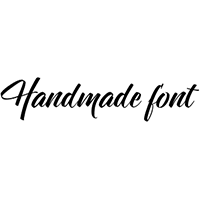


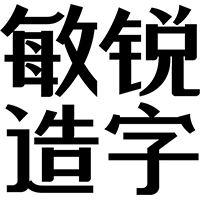
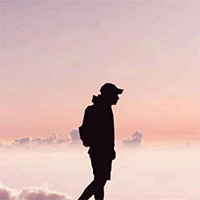

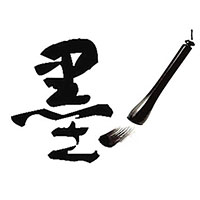





 闽公网安备35010202000240号
闽公网安备35010202000240号